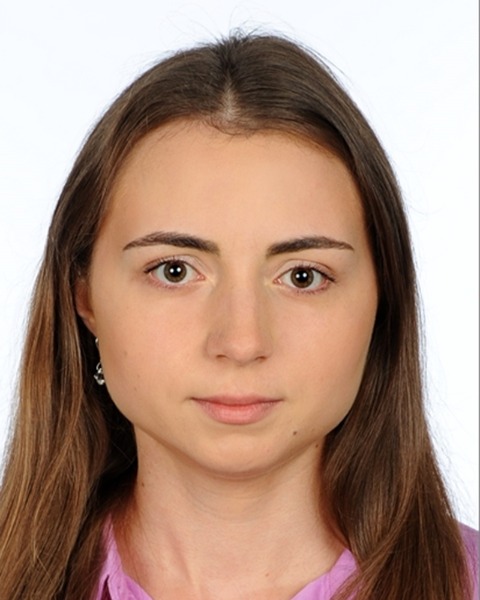Ovary/Oocyte
Poster Session C
(P-264) The impact of vitrification and in vitro culturing on expression of FOXO3 and Ki-67 proteins in bovine ovarian tissue
Friday, July 19, 2024
8:00 AM - 9:45 AM IST
Room: The Forum

Sandra Gąsiorowska (she/her/hers)
PhD student
Institute of Animal Reproduction and Food Research, Polish Academy of Sciences
Olsztyn, Warminsko-Mazurskie, Poland
Poster Presenter(s)
Abstract Authors: Sandra Gąsiorowska1; Izabela Woclawek-Potocka1 ; Ilona Kowalczyk-Zieba1; Dorota Boruszewska1; Joanna Jaworska1; Milena Traut1
1Department of Gamete and Embryo Biology, Institute of Animal Reproduction and Food Research, Polish Academy of Sciences, 10-747 Olsztyn, Poland
Abstract Text: In cattle, there is spontaneous activation of primordial follicles in ovarian tissue cultured in vitro. This effect is likely achieved by disruption of the HIPPO signaling pathway, which occurs after mechanical fragmentation (Kawamura et al., 2013). However, the molecular pathways regulating the activation of primordial follicles are still unknown. Numerous studies suggest that a key factor in primordial follicle activation is the transcription factor forkhead box O3 (FOXO3). It is presumed that FOXO3 is a suppressor of the activation of primordial follicles (Albamonte et al., 2020). In the mouse primordial follicles FOXO3 is expressed in the nucleus and translocates to the cytoplasm at the next stage of the primary follicle (Castrillon et al. 2003). Moreover, the expression of Ki-67 protein is releated with cell proliferation. Ki-67 protein appears during all active phases of the cell cycle (G1, S, 2, and mitosis), but is not present from resting cells (G0). During interphase, the antigen can be only detected in the nucleus, whereas in mitosis most of the protein is translocated to the surface of the chromosomes (Scholzen and Gerdes, 2000). These features of Ki-67 make this protein an excellent marker for determining the proliferative status of ovarian follicles.
For the study bovine ovaries from local slaughterhouse were used. The ovarian cortex was separated from medulla, cut into small pieces and divided into 4 groups: control (fresh tissue), in vitro cultured, vitrified-warmed, and vitrified-warmed and in vitro cultured. Ovarian tissue pieces from all groups were used for immunohistochemical analysis of FOXO and Ki-67 proteins. Additonally, apoptosis level was evaluated using TUNEL Assay Kit - HRP-DAB.
In ovarian tissue subjected to in vitro culture, apoptosis occurred in some cortex cells, but not in ovarian follicle cells. In vitrified-warmed ovarian tissue and in vitrified-warmed and in vitro cultured tissue, apoptosis occurred in some cortical cells, but not in ovarian follicle cells. We found variable pattern of FOXO3 protein expression in the pool of ovarian follicles. Some primordial follicles expressed FOXO3 in both the nucleus and the cytoplasm and some only in the cytoplasm. Immunoreactive granulosa cells were presented in primordial, primary and secondary follicles in both studied groups. However, at later developmental stages, FOXO3 expression was absent in granulosa cells. In cases of Ki-67, expression occurred in the cytoplasm and granulosa cells. Some follicles showed strong Ki-67 protein expression also in the nucleus.
The in vitro culture and cryopreservation protocols used for the study do not acceleate apoptosis in the cells of ovarian tissue. Additionally, the expression of the examined proteins accounts for the presence of the processes related to activation of ovarian follicles in ovarian tissue.
1Department of Gamete and Embryo Biology, Institute of Animal Reproduction and Food Research, Polish Academy of Sciences, 10-747 Olsztyn, Poland
Abstract Text: In cattle, there is spontaneous activation of primordial follicles in ovarian tissue cultured in vitro. This effect is likely achieved by disruption of the HIPPO signaling pathway, which occurs after mechanical fragmentation (Kawamura et al., 2013). However, the molecular pathways regulating the activation of primordial follicles are still unknown. Numerous studies suggest that a key factor in primordial follicle activation is the transcription factor forkhead box O3 (FOXO3). It is presumed that FOXO3 is a suppressor of the activation of primordial follicles (Albamonte et al., 2020). In the mouse primordial follicles FOXO3 is expressed in the nucleus and translocates to the cytoplasm at the next stage of the primary follicle (Castrillon et al. 2003). Moreover, the expression of Ki-67 protein is releated with cell proliferation. Ki-67 protein appears during all active phases of the cell cycle (G1, S, 2, and mitosis), but is not present from resting cells (G0). During interphase, the antigen can be only detected in the nucleus, whereas in mitosis most of the protein is translocated to the surface of the chromosomes (Scholzen and Gerdes, 2000). These features of Ki-67 make this protein an excellent marker for determining the proliferative status of ovarian follicles.
For the study bovine ovaries from local slaughterhouse were used. The ovarian cortex was separated from medulla, cut into small pieces and divided into 4 groups: control (fresh tissue), in vitro cultured, vitrified-warmed, and vitrified-warmed and in vitro cultured. Ovarian tissue pieces from all groups were used for immunohistochemical analysis of FOXO and Ki-67 proteins. Additonally, apoptosis level was evaluated using TUNEL Assay Kit - HRP-DAB.
In ovarian tissue subjected to in vitro culture, apoptosis occurred in some cortex cells, but not in ovarian follicle cells. In vitrified-warmed ovarian tissue and in vitrified-warmed and in vitro cultured tissue, apoptosis occurred in some cortical cells, but not in ovarian follicle cells. We found variable pattern of FOXO3 protein expression in the pool of ovarian follicles. Some primordial follicles expressed FOXO3 in both the nucleus and the cytoplasm and some only in the cytoplasm. Immunoreactive granulosa cells were presented in primordial, primary and secondary follicles in both studied groups. However, at later developmental stages, FOXO3 expression was absent in granulosa cells. In cases of Ki-67, expression occurred in the cytoplasm and granulosa cells. Some follicles showed strong Ki-67 protein expression also in the nucleus.
The in vitro culture and cryopreservation protocols used for the study do not acceleate apoptosis in the cells of ovarian tissue. Additionally, the expression of the examined proteins accounts for the presence of the processes related to activation of ovarian follicles in ovarian tissue.
